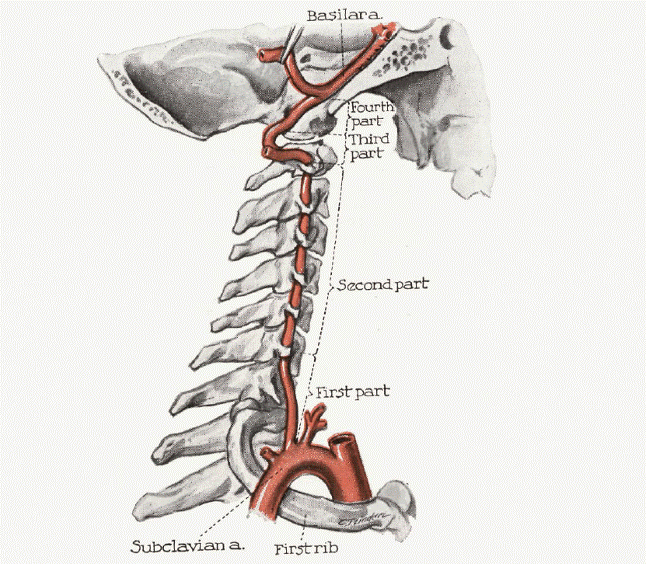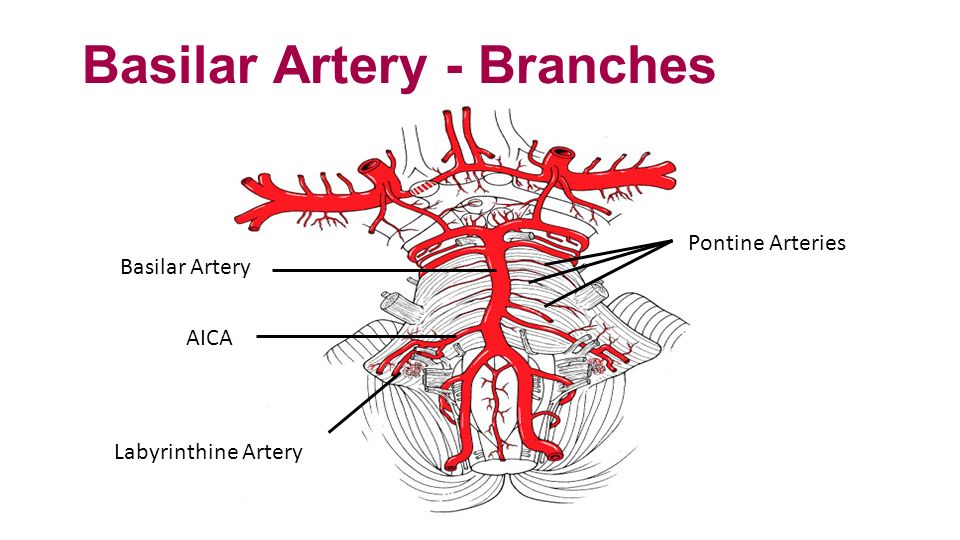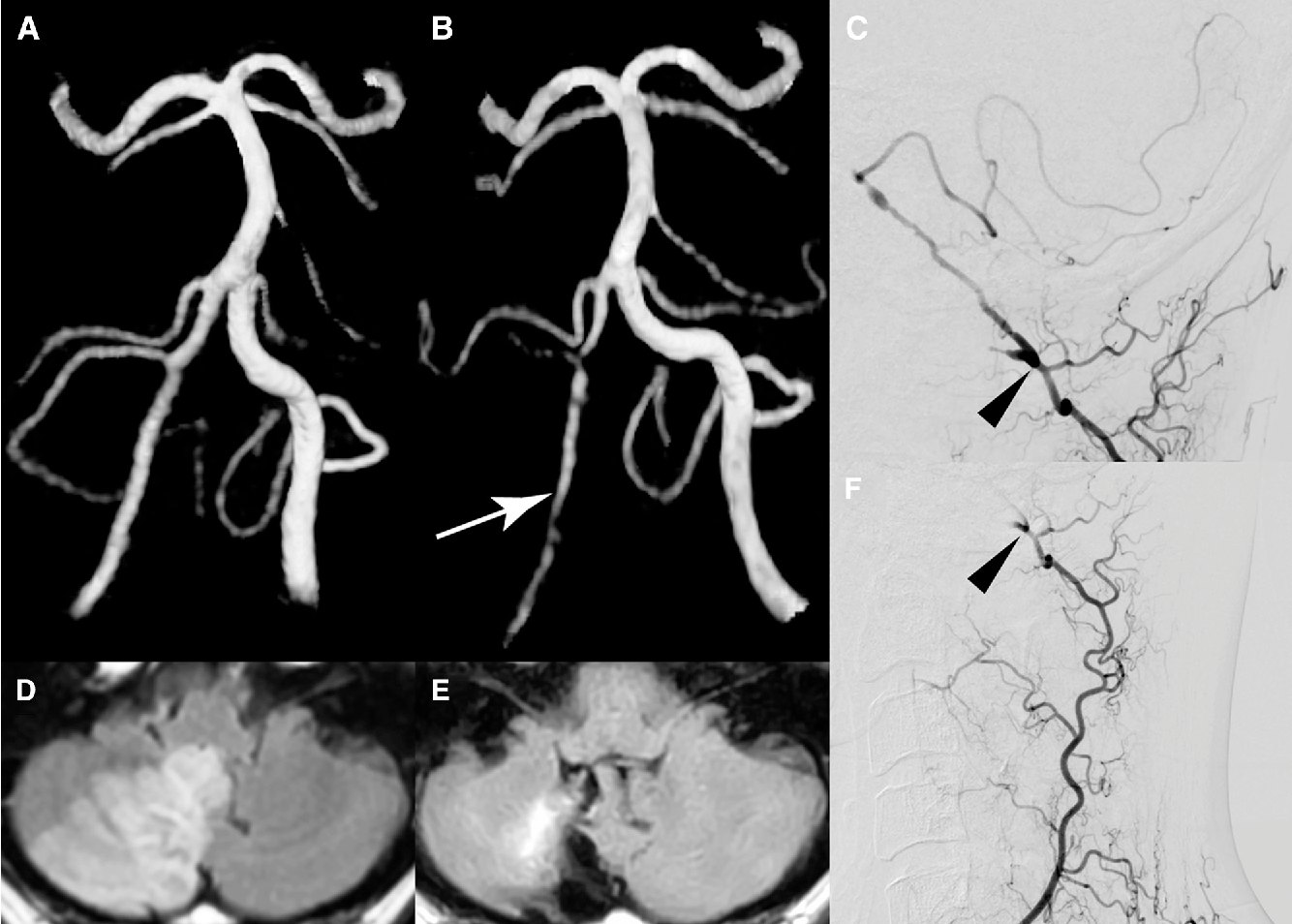Makindo Medical Notes"One small step for man, one large step for Makindo" |
|
|---|---|
| Download all this content in the Apps now Android App and Apple iPhone/Pad App | |
| MEDICAL DISCLAIMER: The contents are under continuing development and improvements and despite all efforts may contain errors of omission or fact. This is not to be used for the assessment, diagnosis, or management of patients. It should not be regarded as medical advice by healthcare workers or laypeople. It is for educational purposes only. Please adhere to your local protocols. Use the BNF for drug information. If you are unwell please seek urgent healthcare advice. If you do not accept this then please do not use the website. Makindo Ltd. |
The Vertebral and Basilar Arteries
-
| About | Anaesthetics and Critical Care | Anatomy | Biochemistry | Cardiology | Clinical Cases | CompSci | Crib | Dermatology | Differentials | Drugs | ENT | Electrocardiogram | Embryology | Emergency Medicine | Endocrinology | Ethics | Foundation Doctors | Gastroenterology | General Information | General Practice | Genetics | Geriatric Medicine | Guidelines | Haematology | Hepatology | Immunology | Infectious Diseases | Infographic | Investigations | Lists | Microbiology | Miscellaneous | Nephrology | Neuroanatomy | Neurology | Nutrition | OSCE | Obstetrics Gynaecology | Oncology | Ophthalmology | Oral Medicine and Dentistry | Paediatrics | Palliative | Pathology | Pharmacology | Physiology | Procedures | Psychiatry | Radiology | Respiratory | Resuscitation | Rheumatology | Statistics and Research | Stroke | Surgery | Toxicology | Trauma and Orthopaedics | Twitter | Urology
Related Subjects: |The Coronary Arteries |The Axillary Artery |The Brachial Artery |The Carotid Artery |The Femoral Artery |The Popliteal artery |The Subclavian Artery |The Basilar and vertebral |The Iliac Artery |The Brachial Artery |The Axillary Artery |The radial and Ulnar Artery |The Vena Cava
The vertebral and basilar arteries are key components of the posterior circulation of the brain. They supply oxygenated blood to critical areas, including the brainstem, cerebellum, and posterior parts of the cerebral hemispheres.
Vertebral Arteries

- Origin :
- The vertebral arteries arise from the subclavian arteries on each side of the body.
- Course :
- Ascend through the transverse foramina of the cervical vertebrae (C6 to C1).
- Enter the cranial cavity through the foramen magnum.
- Join together at the junction of the medulla and pons to form the basilar artery.
- Branches :
- Anterior Spinal Artery : Supplies the anterior portion of the spinal cord.
- Posterior Inferior Cerebellar Artery (PICA) : Supplies parts of the cerebellum and medulla oblongata.
- Small branches supplying the medulla oblongata.
- Functions :
- Provide oxygenated blood to the posterior part of the brain, including the brainstem and cerebellum.
Basilar Artery

- Origin :
- Formed by the union of the left and right vertebral arteries at the junction of the medulla and pons.
- Course :
- Ascends in the midline over the pons, within the pontine cistern.
- Terminates by dividing into the left and right posterior cerebral arteries at the upper border of the pons.
- Branches :
- Anterior Inferior Cerebellar Arteries (AICA) : Supply the cerebellum and parts of the brainstem.
- Pontine Arteries : Numerous small branches supplying the pons.
- Superior Cerebellar Arteries : Supply the superior part of the cerebellum and parts of the midbrain.
- Posterior Cerebral Arteries : Supply the occipital lobes, inferior parts of the temporal lobes, and parts of the thalamus and midbrain.
- Functions :
- Provide oxygenated blood to the brainstem, cerebellum, and posterior parts of the cerebral hemispheres.
Clinical Relevance

- Vertebral Artery Dissection :
- A tear in the inner lining of the vertebral artery, which can lead to stroke.
- Causes: Trauma, neck manipulation, and spontaneous events.
- Symptoms: Neck pain, headache, dizziness, and neurological deficits.
- Treatment: Anticoagulation or antiplatelet therapy, and in some cases, surgical intervention.
- Basilar Artery Occlusion :
- Blockage of the basilar artery, which can lead to brainstem stroke.
- Symptoms: Sudden dizziness, double vision, difficulty speaking, weakness, and loss of consciousness.
- Treatment: Thrombolysis or mechanical thrombectomy to restore blood flow.
- Posterior Circulation Stroke :
- Occurs when there is an interruption of blood flow in the vertebral or basilar arteries.
- Symptoms: Vertigo, imbalance, visual disturbances, and weakness or numbness on one side of the body.
- Treatment: Depends on the cause; may include anticoagulation, antiplatelet therapy, or surgical intervention.
Summary
The vertebral and basilar arteries are essential for supplying blood to the posterior part of the brain, including the brainstem and cerebellum. The vertebral arteries originate from the subclavian arteries and merge to form the basilar artery, which gives off several important branches. Understanding their anatomy and clinical relevance is crucial for diagnosing and managing conditions such as vertebral artery dissection, basilar artery occlusion, and posterior circulation strokes.